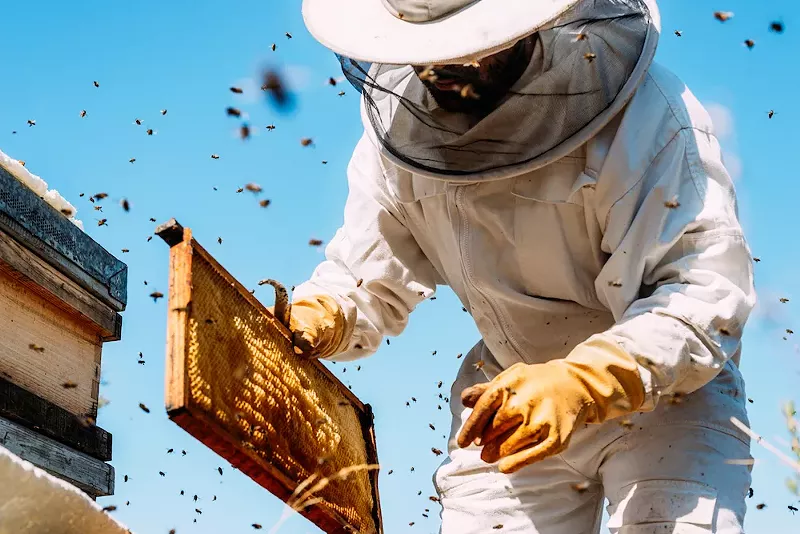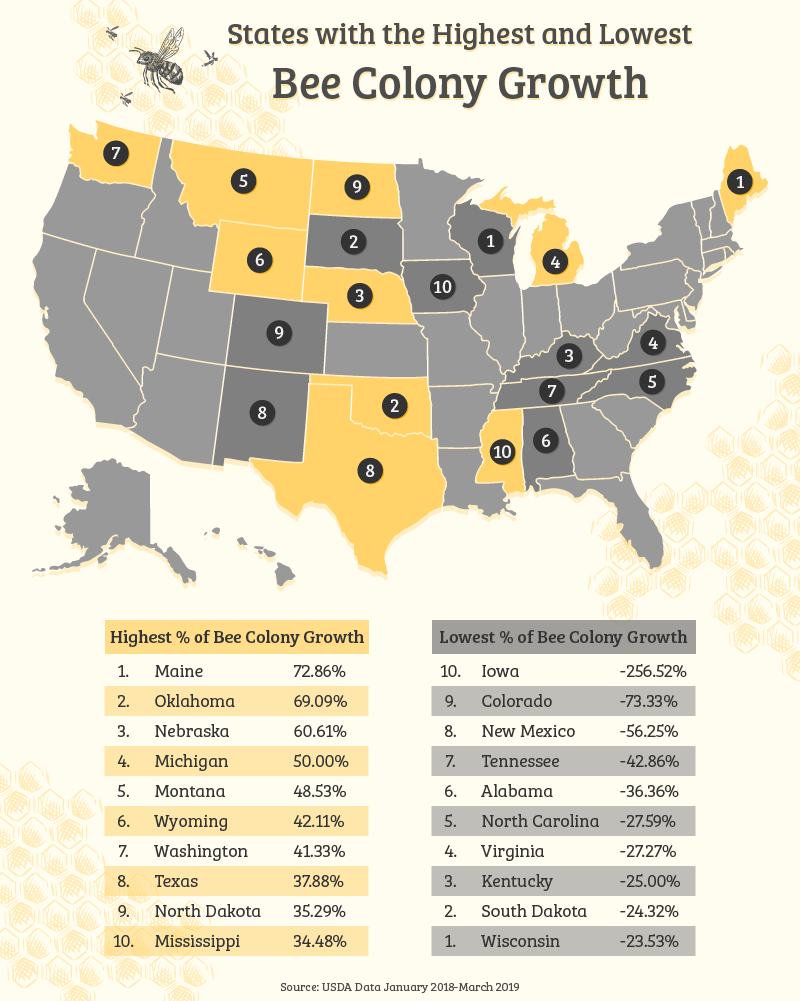
Audio By Carbonatix
[
{
"name": "GPT - Leaderboard - Inline - Content",
"component": "35519556",
"insertPoint": "5th",
"startingPoint": "3",
"requiredCountToDisplay": "3",
"maxInsertions": 100,
"adList": [
{
"adPreset": "LeaderboardInline"
}
]
}
]
In news that doesn't sting, a recent study found that Michigan bee populations are up 50% since 2018.
New data published by Spring Hill Nursery, which used research from the United States Department of Agriculture, ranked Michigan fourth in states with the highest bee colony growth. Michigan follows Nebraska, Oklahoma, and Maine, which came in first with a 72.86% increase since 2018.
The study also identified those states losing the most bee colonies. At the top of the list is California, which reportedly lost 160,600 colonies in just two years. There's a pretty big gap between California and the state with the second-highest bee colony loss, Florida, which has lost 42,800.
Despite California's dramatic colony loss, it's still home to the largest number of bees. According to the data, they're the only state in the U.S. to have more than 1 million colonies. Florida, too, has one of the highest hive counts in the country with close to 250,000.
This news comes at a time when both wild and managed bee populations are suffering massive declines.
Between 2018 and 2019, worldwide managed bee populations decreased by 40.7%, and, last year, researchers discovered a “dramatic decline” in at least 14 wild bee populations in the U.S., vital to fruit crops. This includes Michigan, where researchers have found that at least six species have declined by 50% or more in the last 20 years, and one species, the rusty patched bumblebee, has become extinct.
Some regions in the world have reported losses as high as 90% in a 15-year span, The National Geographic reports. The leading cause in declining populations is believed to be exposure to pesticides, insecticides, parasites, and pathogens, as well as limited sources of nectar and pollen. For years, colony loss was attributed to a rare phenomenon called Colony Collapse Disorder, which occurs when worker bees abandon the queen, the hive's food supply, and some nurse bees. A colony's survival often relies on the presence of worker bee populations.
Stay on top of Detroit news and views. Sign up for our weekly issue newsletter delivered each Wednesday.







